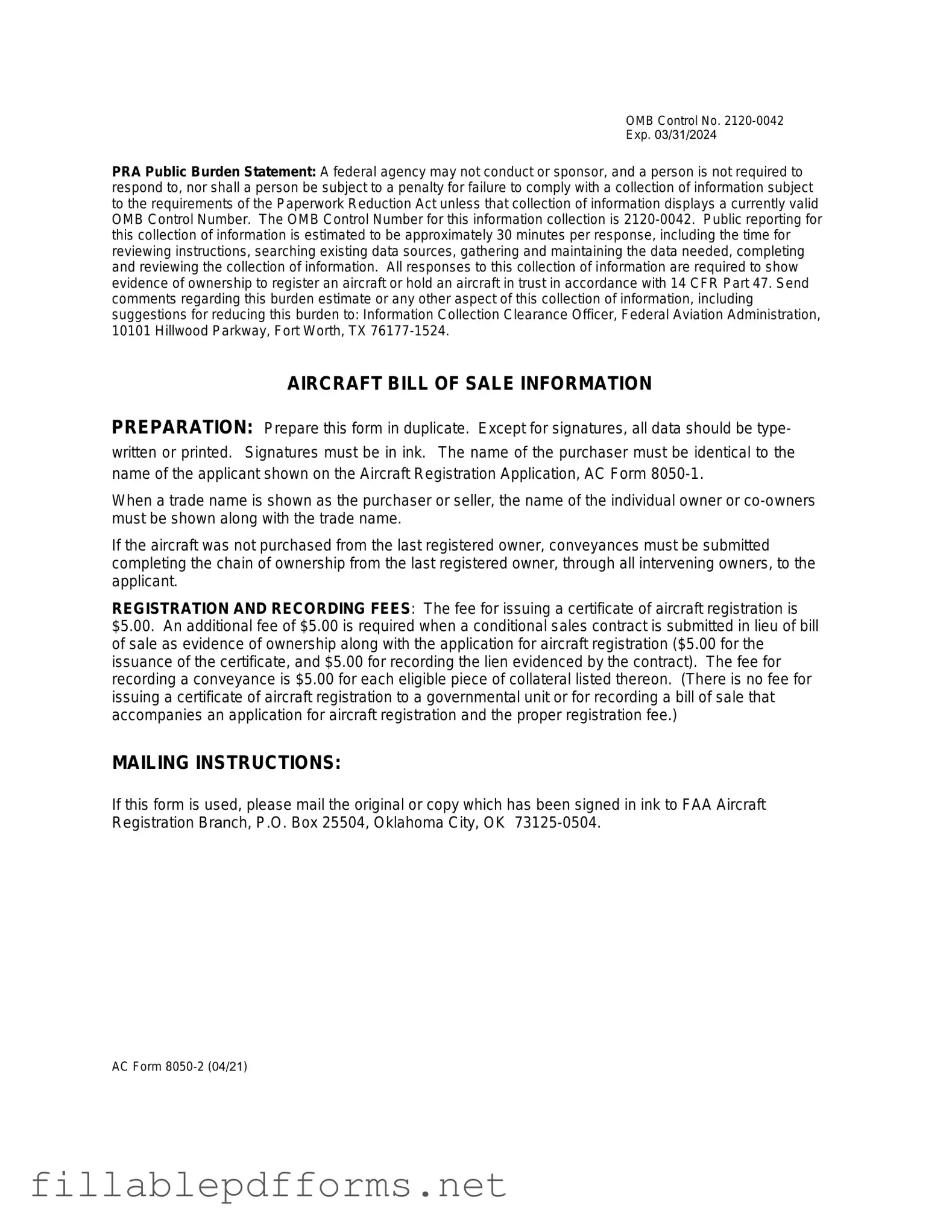Aircraft Bill of Sale AC 8050-2 PDF Template
The Aircraft Bill of Sale AC 8050-2 form is a crucial document used in the transfer of ownership for aircraft in the United States. This form serves as proof of the sale and provides essential details about the aircraft and the parties involved. Understanding its importance can help streamline the buying or selling process, ensuring all necessary information is properly documented.
Launch Editor Here
